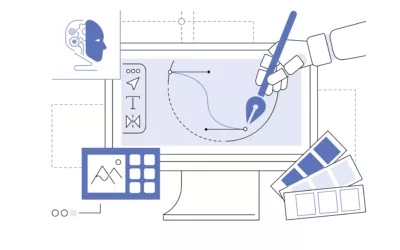The concept of green tech on the rise is reshaping industries, including software development, as businesses aim to reduce their environmental impact. Sustainable software practices are becoming essential for cutting energy consumption, improving operational efficiency, and aligning with global ecological goals. By adopting green technology, companies can position themselves as leaders in sustainability while driving innovation.
Why Sustainability in Software Matters
The rise of green technology highlights the growing need for environmentally friendly solutions across sectors. In particular, the tech industry has a significant ecological footprint. For instance, data centers consume nearly 1% of the world’s energy, with this figure expected to rise. By implementing sustainable practices, businesses can reduce their environmental impact while enjoying benefits like lower costs and an improved reputation.
Strategies for Driving Sustainability in Software
1. Writing Energy-Efficient Code
Well-written code can significantly reduce energy usage. For example, streamlining algorithms and removing unnecessary operations not only boosts application performance but also minimizes the computational power required.
2. Optimizing Cloud Usage
Cloud computing plays a pivotal role in reducing energy consumption. Companies can achieve this by selecting providers powered by renewable energy and ensuring efficient workload distribution to eliminate resource waste.
3. Incorporating Automation in Development
Automation and DevOps principles make workflows more efficient, thereby reducing resource waste. This ensures a faster development process, which consumes less energy overall.
4. Following Green Software Principles
Developers can integrate sustainability into their work by following guidelines that prioritize resource optimization. For instance, reducing unnecessary data transfers and focusing on lightweight applications are excellent starting points.
The Role of Technology in Sustainability
Technologies like AI and big data are instrumental in advancing green initiatives. For example, they help companies analyze energy consumption, identify inefficiencies, and implement effective optimizations. By leveraging these tools, organizations not only reduce waste but also ensure long-term sustainability.
Benefits of Embracing Green Tech on the Rise
Adopting eco-friendly practices in software development brings a range of advantages:
- Cost Savings: Energy-efficient solutions lower operational expenses.
- Regulatory Compliance: Governments are introducing stricter environmental policies, making compliance essential.
- Improved Brand Image: Sustainability resonates strongly with consumers, enhancing brand loyalty.
Furthermore, eco-conscious practices align with employee values, which can improve morale and retention rates.
Overcoming Barriers to Adoption
Despite the benefits, implementing sustainable software practices can present challenges, such as high initial costs or lack of expertise. However, these hurdles can be addressed by:
- Collaborating with green tech consultants.
- Training teams to adopt eco-friendly tools and practices.
- Utilizing cost-effective, open-source solutions to offset expenses.
Conclusion: Green Tech on the Rise is the Future
Green tech on the rise is more than a trend; it’s a crucial shift toward a sustainable future. By adopting sustainable software practices, businesses can reduce their environmental impact, improve efficiency, and remain competitive in a rapidly evolving marketplace..
Partner with Us for Sustainable Solutions
Are you ready to implement sustainable software practices? Our team can help you optimize your operations for a greener tomorrow. Contact us today to take the first step toward a sustainable future.



